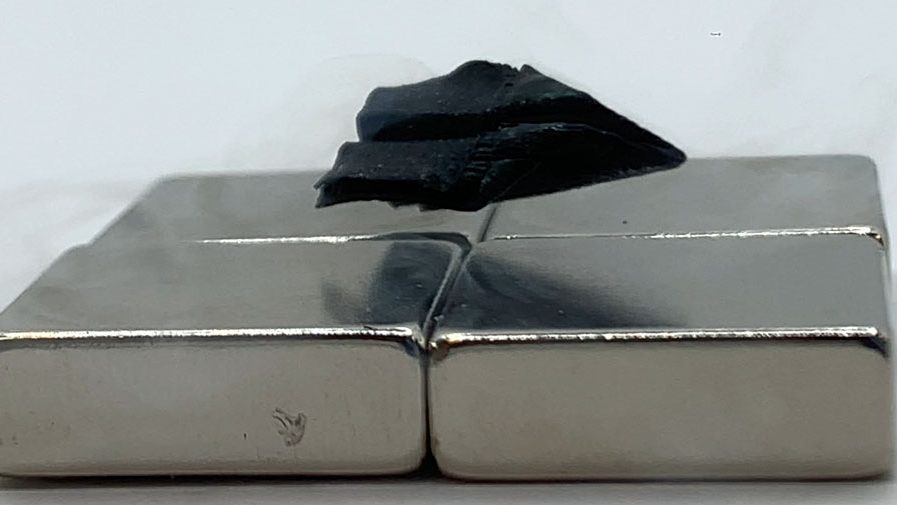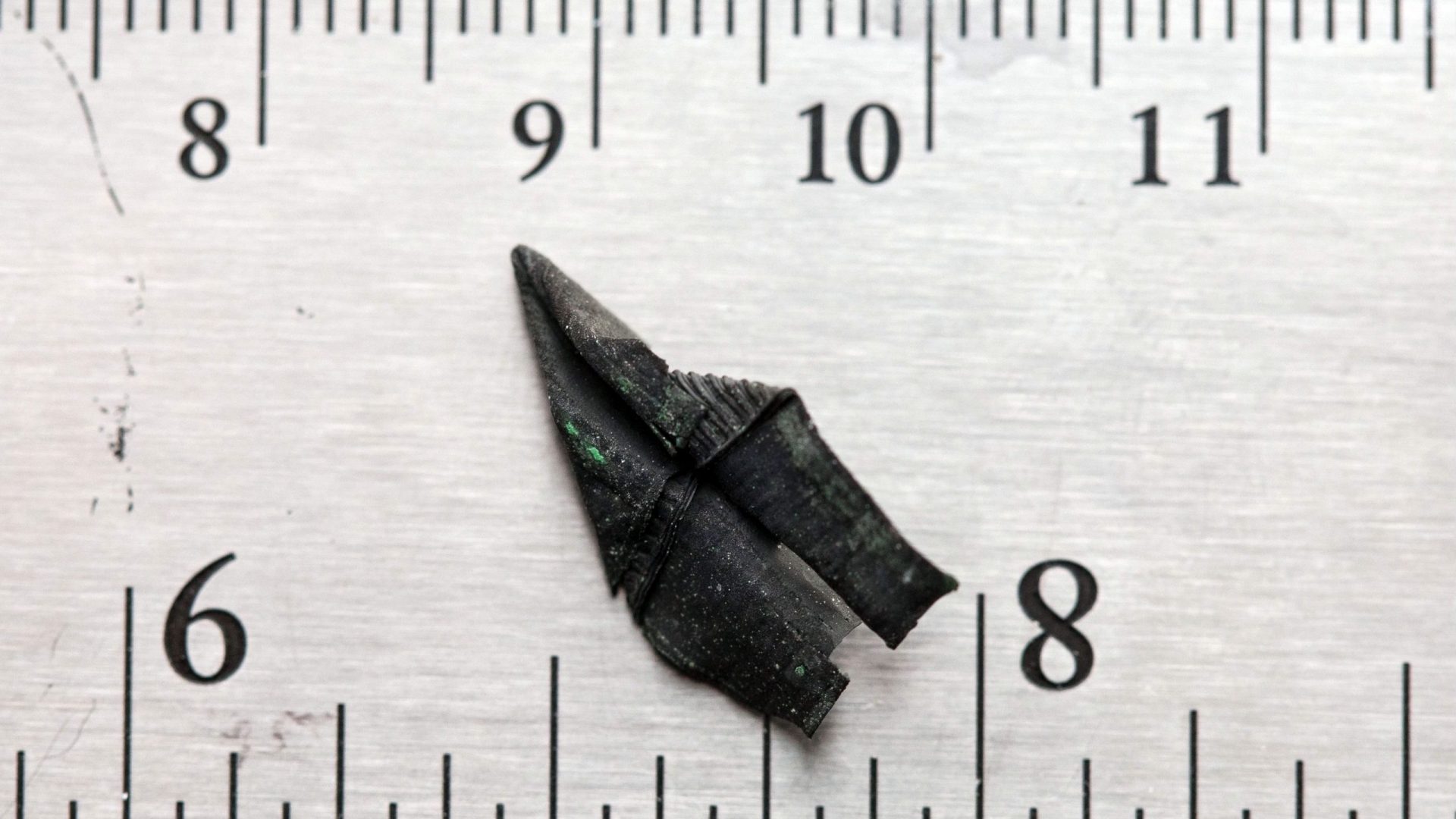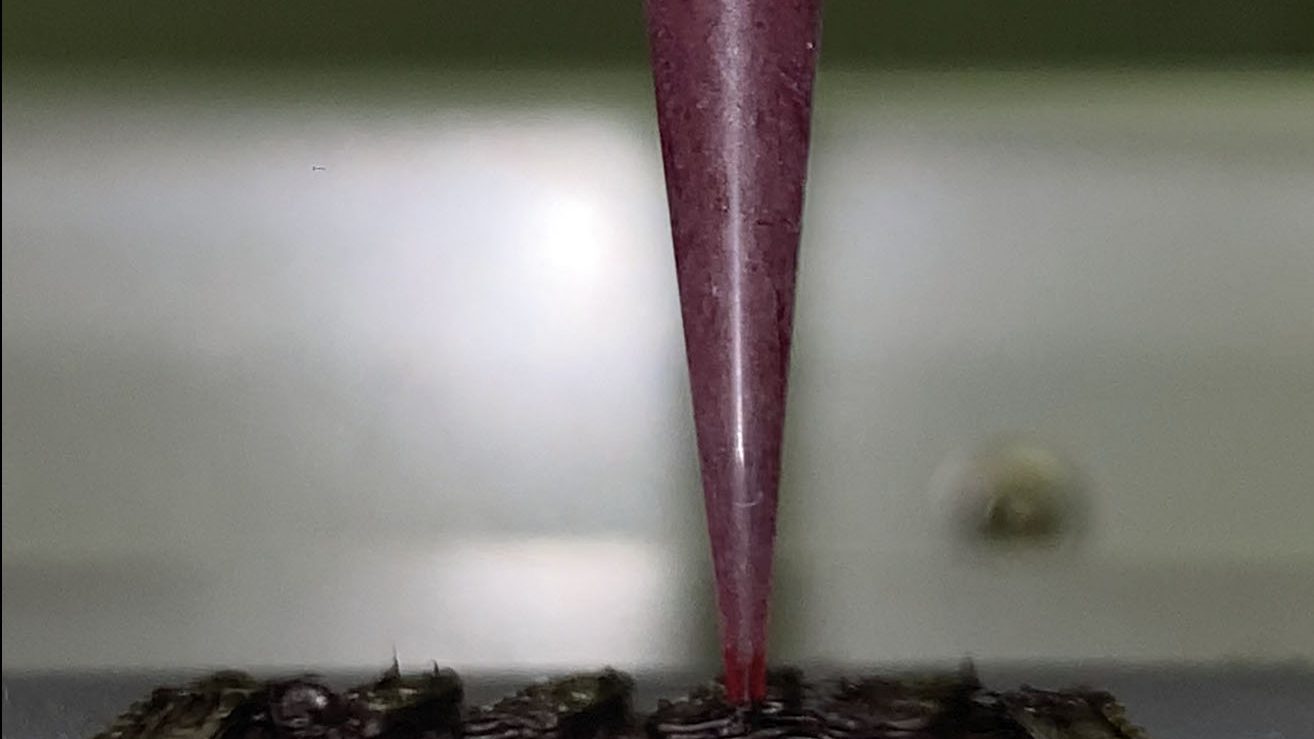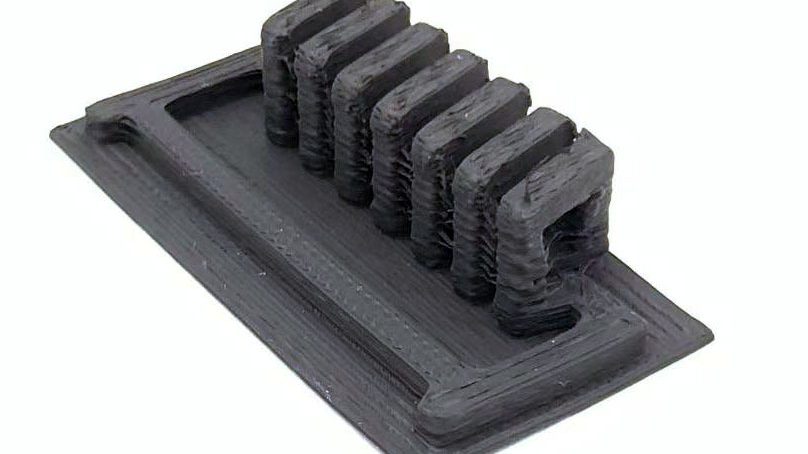Beginning today, photographers are invited to apply for a spot to capture exclusive and behind-the-scenes photographs of locations at Fermi National Accelerator Laboratory in Batavia, Illinois. Professional and amateur photographers will be able to explore and take pictures of scientific experiments and equipment in five designated research areas that are not accessible to the public.
The 2025 Global Physics Photowalk is a photo competition that begins with a local contest at each of the participating laboratories. As part of this, Fermilab will offer a day this summer for 25 photographers to tour the lab and take photos, which can then be submitted to the local contest. Fermilab judges will submit three of the local winners to the worldwide Global Physics Photowalk competition. The Interactions Collaboration will announce a shortlist of global finalists in September, and the winners will be selected by a jury and public vote.
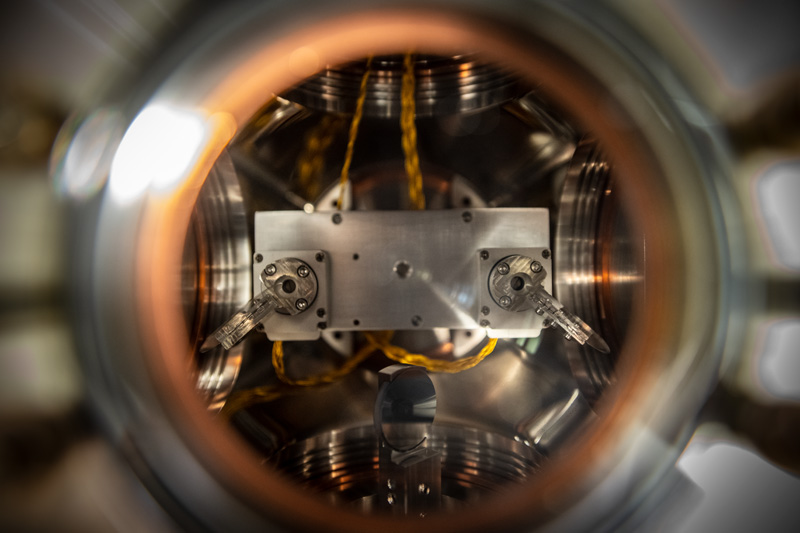
Credit: Ryan Postel, Fermilab
This year’s Global Physics Photowalk has 16 participating particle physics laboratories from three continents. The winning photos will be featured in a future issue of the CERN Courier and in Symmetry magazine.
“Enabling photographers to capture the research and technologies at Fermilab is another way for people from all over the world to see the amazing high-energy particle physics we do,” said Fermilab’s interim director, Young-Kee Kim. “The connection between art and science is profound and can be universally understood in any language.”
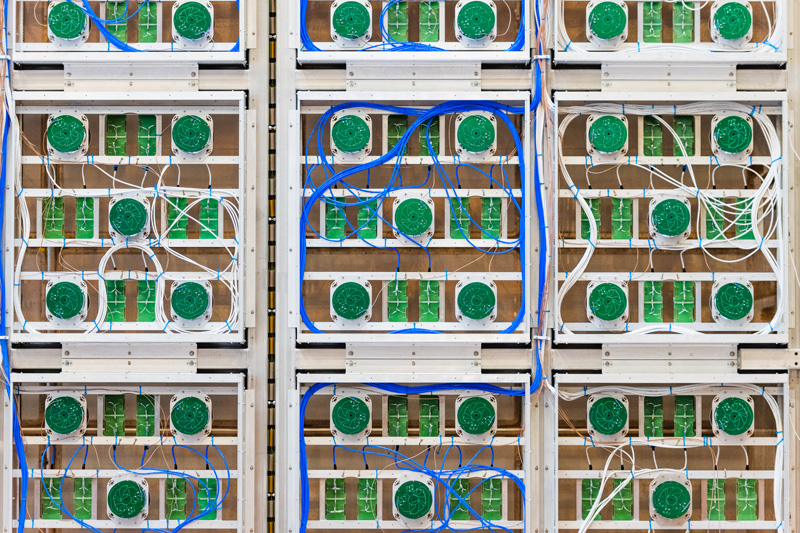
Photos from previous years can be viewed on the Interactions website. Photographers of all skill levels are welcome and do not need to be a U.S. citizen to apply.
Space is limited for the Fermilab Photowalk day scheduled for Saturday, July 26, 2025, from 8 a.m. to 12 p.m. Participants must submit the online application by June 1, 2025.
The 2025 Global Photowalk is organized by the Interactions Collaboration, an international group of science communicators dedicated to telling stories about particle physics research and achievements.
You can follow the Photowalk on social media using #PhysPics25.
Fermi National Accelerator Laboratory is supported by the Office of Science of the U.S. Department of Energy. The Office of Science is the single largest supporter of basic research in the physical sciences in the United States and is working to address some of the most pressing challenges of our time. For more information, please visit science.energy.gov.
A team of researchers from the U.S. Department of Energy’s Fermi National Accelerator Laboratory, Caltech, NASA’s Jet Propulsion Laboratory, University of Geneva and Federico Santa María Technical University in Chile recently tested a new technology to determine whether superconducting microwire single photon detectors, or SMSPDs, are feasible for use in future particle physics experiments. The results found that the SMSPDs were able to detect a variety of particles with impressive detection efficiency, making them a promising technology to advance particle physics research and dark matter detection. This achievement represents a significant step toward developing advanced detectors for next-generation particle physics experiments.
The groundbreaking study was conducted at Fermilab, where an array of SMSPDs was used to measure particle efficiency and time resolution while detecting high-energy particles such as protons, electrons and pions. Efficient and accurate detection these particles is essential to enhancing scientists’ understanding of fundamental physics.
“We are very excited to work on cutting-edge detector R&D like SMSPDs because they may play a vital role in capstone projects in the field such as the planned Future Circular Collider or an International Muon Collider,” said Fermilab scientist Cristián Peña, who led the research. “And we are thrilled to have assembled a world-class team across several institutions to push this emerging research to the next level.”
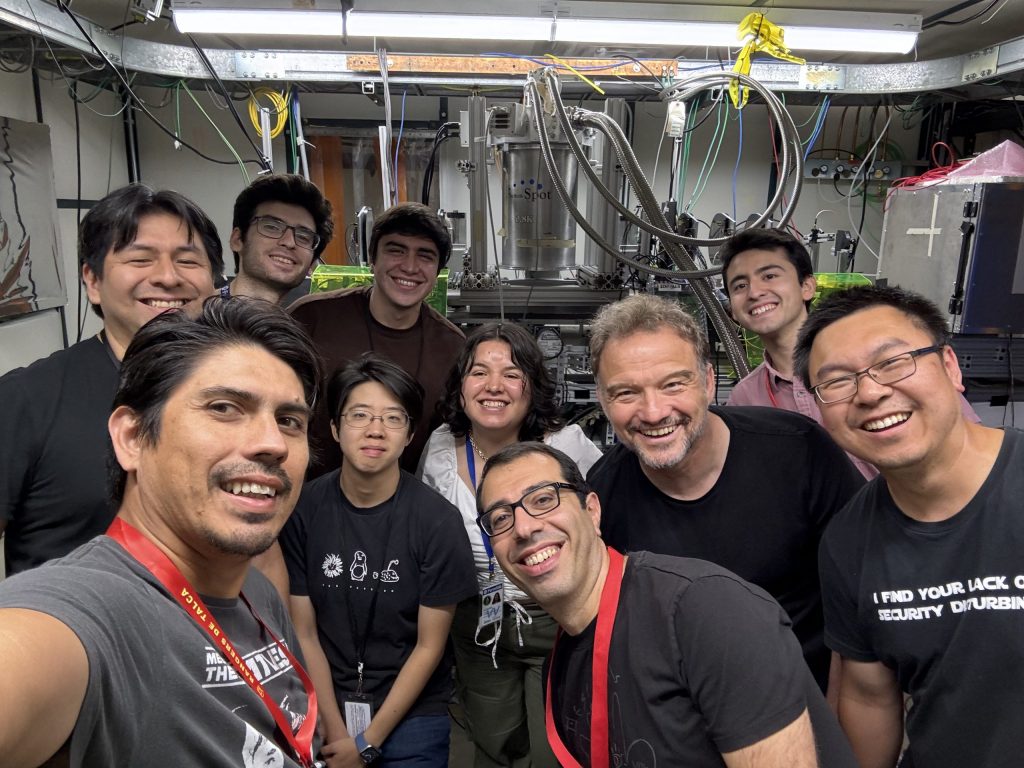
Traditional particle detectors, while effective, often face limitations in sensitivity, spatial resolution and time resolution — critical requirements for accurately detecting particles. The need for ever more precise particle detectors has driven researchers to explore new sensing materials and technologies.
The SMPSD arrays, which were designed and fabricated at Jet Propulsion Laboratory, or JPL, are a variation of high-performing superconducting nanowire single photon detectors, or SNSPDs. Both devices work similarly. A thin film of superconducting material — in this case, 3-nanometer-thick tungsten silicide — is patterned into 1.5-micron-wide wires covering an active area that detects charged particles as they deposit energy into the sensor. Researchers apply a bias current just below the maximum current the superconducting wire can sustain. Once the charged particles deposit enough energy to break the superconductivity, the bias current diverts from the wire to produce a detectable electrical pulse.
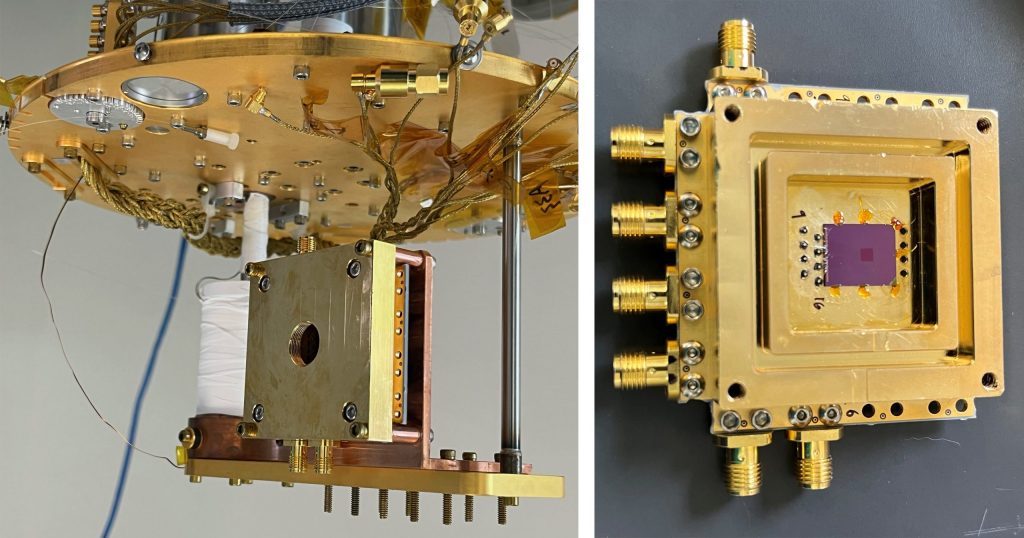
SNSPDs have been instrumental in fields like quantum information science and space exploration due to their ultra-low energy thresholds and exceptional time resolution. For example, JPL develops them for space-based optical communications, while Fermilab uses them in its quantum networks, dark matter research and astrophysics applications. However, for particle physics, their use has been limited because of their small active detection area and little to no particle beam studies.
In contrast, SMSPDs have a much larger active detection area than their nanowire cousins, marking a significant step forward for the large particle detectors needed for particle physics experiments.
The researchers reported a consistent detection efficiency using the SMSPDs across different detection areas and bias currents. A silicon tracking telescope installed at Fermilab’s Test Beam Facility provided the precise and crucial spatial resolution needed to accurately measure detection efficiency. In addition, the timing resolution, which is essential to accurately track particles in next-generation accelerator-based experiments, was measured for the first time for such charged particles.
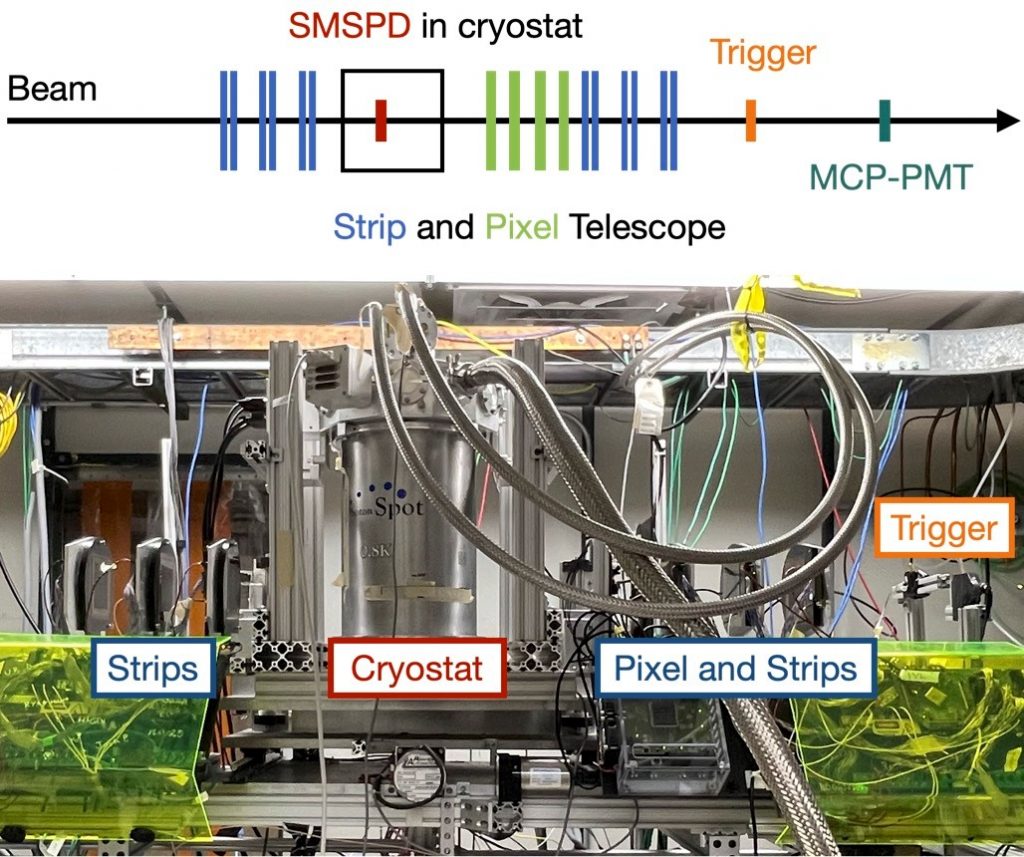
“This is significant step toward developing advanced detectors for future particle physics experiments,” said coauthor Si Xie, a scientist at Fermilab with a joint appointment at Caltech as a research scientist. “This is just the beginning. We have the potential to detect particles lower in mass than we could before, as well as exotic particles like those that may constitute dark matter.”
The research team is already working to further improve SMSPD arrays and other similar technologies.
“We are in the process of optimizing SMSPD arrays for high-energy particle detection in terms of time resolution and detection efficiency so this technology can be used in next-generation accelerator-based experiments,” said Christina Wang, a Lederman Fellow at Fermilab who is also a co-author on this study. “We will continue to test these optimized arrays with greater precision.”
“In future experiments, the team plans to explore using SMSPD arrays in accelerator-based experiments by characterizing their ability to operate effectively in high-radiation environments with high-particle occupancy,” added Wang.
These are crucial steps toward integrating this promising technology into tomorrow’s particle detectors to help discover new physics phenomena.
The study in the Journal of Instrumentation is titled “High energy particle detection with large area superconducting microwire array” and was funded by the U.S Department of Energy, Fermi National Accelerator Laboratory, the National Agency for Research and Development (ANID) in Chile and the Federico Santa María Technical University.
Fermi National Accelerator Laboratory is supported by the Office of Science of the U.S. Department of Energy. The Office of Science is the single largest supporter of basic research in the physical sciences in the United States and is working to address some of the most pressing challenges of our time. For more information, please visit science.energy.gov.
Powerful particle accelerators can enable important scientific discoveries. They can also safely sterilize medical equipment, remove dangerous chemicals from water and soil and eradicate harmful organisms from fruits and vegetables. However, even the mightiest machines can be felled by a single weak link. As higher-powered and more expensive accelerators are being increasingly sought after for use in science and industry, researchers are seeking ways to make them more reliable and optimize the return on investment.
Engineers at the U.S. Department of Energy’s Fermi National Accelerator Laboratory are drawing on decades of experience designing, building and operating superconducting radio-frequency accelerators to deliver higher powered machines with greater reliability for broader scientific and industrial use.
In a multi-year project led by engineers and scientists at Fermilab’s Illinois Accelerator Research Center, or IARC, the team worked with Euclid Techlabs, an industry research lab that specializes in superconducting radio-frequency technologies and materials. One of IARC’s missions is to engage in commercialization of technology.
The research team tested a new slightly conductive ceramic for use in a key accelerator component called the radio frequency window. The RF window is part of the power coupler that delivers radio-frequency energy to the accelerator from an external power supply. Within the accelerator cavity, the radio-frequency energy speeds up the particles.
RF couplers have two sides: one connected to the vacuum-sealed accelerator cavity and the other exposed to atmospheric pressure. The ceramic RF window acts as a barrier between these environments.
“It’s similar to a window in your home where you can see through, but it doesn’t allow cold air from outside to get in,” said Chris Edwards, a Fermilab IARC engineer who is involved in industrial SRF development. “In an accelerator, the RF window allows the power to pass through but prevents the atmospheric air from leaking into the vacuum side. Even negligible leaks would cause the accelerator to become damaged or inoperable.”

Because RF energy cannot pass through metal, the RF window must be constructed of ceramic, which is attached to metal conductors both inside and outside by brazing. The ceramic allows high energy RF power — typically around 50 kilowatts at Fermilab — to pass through, with future accelerators requiring even higher power levels.
However, ceramic is an insulator, meaning it does not conduct electric currents. This can cause the buildup of charged particles such as electrons on its surface, leading to electrical breakdowns that can destroy the window.
“As we move to higher and higher-powered accelerators, there’s a greater risk of the ceramic being damaged, so it’s very beneficial to us to have more reliable ceramic windows for our RF couplers,” said Sergey Kazakov, an engineering physicist at Fermilab who worked on this project.
To this end, Euclid Techlabs used its expertise in ceramic materials and manufacturing processes to develop technology that makes the ceramic slightly conductive — just enough to remove the accumulated electrical charge from the ceramic surface and volume while keeping the ceramic RF energy losses small enough for this application. Euclid Techlabs provided the Fermilab team with a power coupler built using the new type of ceramics.
“This new, conductive ceramic is as good or better than traditional alumina ceramic windows, and prevents the problems associated with charging,” said Ben Freemire, a scientist at Euclid Techlabs.
Fermilab tested the prototype in its facility with promising findings.
“The results were very good,” said Kazakov. “The coupler testing reached 80 kilowatts full reflection. The power was limited by the test facility, not the coupler. By focusing on one of the riskier components of SRF accelerators, a more reliable ceramic was produced and tested that can help the accelerator remain operational and reduce the risk of parts being damaged.”
The next step, according to Fermilab IARC engineer and project leader Josh Helsper, is to further improve the RF window so it can eventually be used in an actual SRF accelerator. This requires the ability to securely attach the ceramic to a copper sleeve. While the original prototype was soldered, the final product will use brazing — a process that involves heating metal joint surfaces and a filler metal to higher temperatures to create stronger connections.
“Soldering is useful for testing proofs of concept, but brazing is needed for use in real-world accelerators,” explained Helsper. “Brazing is the preferred connection method because it can connect dissimilar metals, and the higher temperatures used in brazing enable the copper to fuse to stronger materials typically used in accelerators like the gold-copper or silver-copper mixtures.”
Brazing these components requires special facilities and equipment that can achieve temperatures around 1,832 degrees Fahrenheit (1,000 degrees Celsius), and the process is performed in a vacuum to prevent oxidation. Euclid has tested the electrical conductivity and the power leak rate of a newer version of brazed conductive ceramic and found that they are satisfactory for an SRF accelerator.
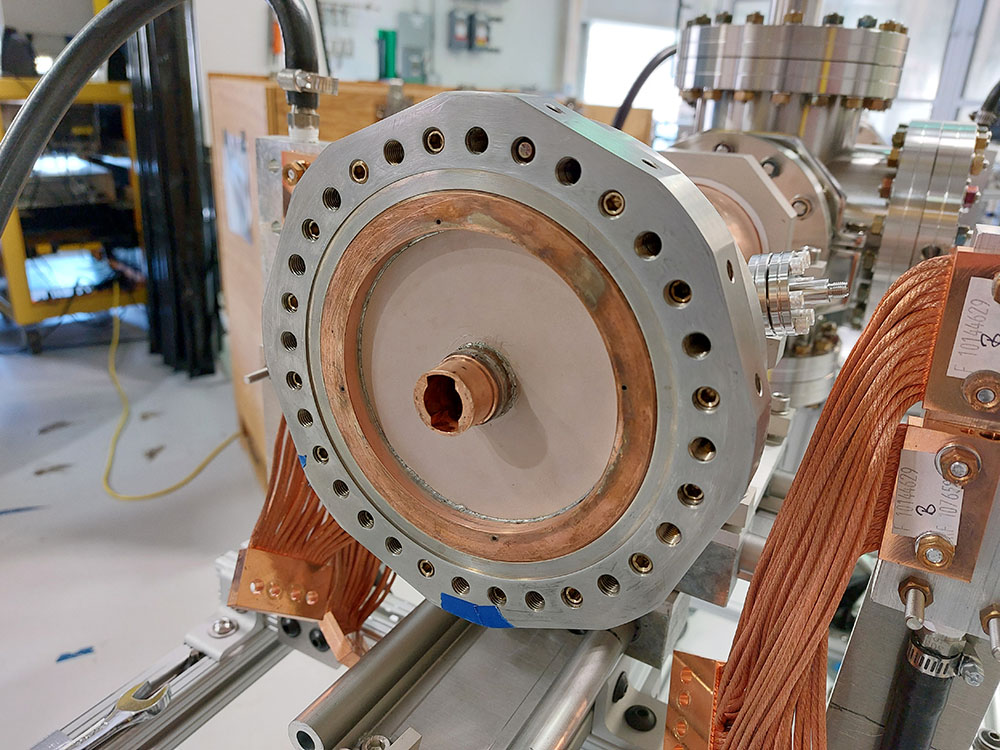
Now that they have successfully tested the new ceramic material and brazing process, the Fermilab team will be seeking a power coupler manufacturer to standardize the production of brazed ceramic RF windows.
“This work was essential to advance industrial SRF technology and part of the leading-edge work that Fermilab does. This positions us well for our future accelerators,” said Edwards.
Fermi National Accelerator Laboratory is America’s premier national laboratory for particle physics and accelerator research. Fermi Forward Discovery Group manages Fermilab for the U.S. Department of Energy Office of Science. Visit Fermilab’s website at www.fnal.gov and follow us on social media.
Funding from the U.S. Department of Energy’s Fermi National Accelerator Laboratory has enabled researchers at Northwestern University and Fermilab to invent a new process for 3D printing high-temperature superconductors. This method is the first to fabricate 3D-printed ceramic superconductors with a monocrystalline microstructure and is currently awaiting U.S. patent approval.
Their paper was published Feb. 24 in Nature Communications.
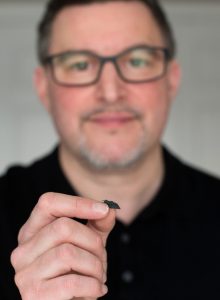
Credit: Melanie Turenne
Superconductors are a special type of material that can conduct electricity with zero resistance — but only at extremely cold temperatures. High-temperature superconductors are unique because they work at temperatures greater than traditional superconductors, making them more practical for applications.
Cristian Boffo, a co-author on the paper, secured funding for the project through Fermilab’s Laboratory Directed Research and Development program. Boffo is project director for the Proton Improvement Plan-II, a project building a state-of-the-art superconducting linear accelerator at Fermilab.
Boffo received LDRD funding to develop advanced magnets called superconducting undulators, aligning with activities planned in Fermilab’s Applied Physics and Superconducting Technology Directorate. One of the project’s aims is to explore new technologies that can revolutionize the design and manufacturing of superconducting undulators through the introduction of high-temperature superconductors and 3D printing. That’s where the Northwestern researchers came in.
“Fermilab wants to make better and better magnet systems that are more efficient and reach higher performance,” said Boffo. “Northwestern provides the experience in 3D printing, and we provide experience in superconductors.”
The quest for high-temperature superconductors
When electricity flows through a material at normal temperatures, there will always be some energy loss due to resistance. Over 100 years ago, scientists discovered the phenomenon of superconductivity: when brought down to temperatures close to absolute zero — minus 460 degrees Fahrenheit (minus 273 degrees Celsius) — materials lose electrical resistance, enabling electricity to move through them extremely efficiently. This requires expensive and hard-to-handle coolants like liquid helium.
In the 1980s, scientists discovered high-temperature superconductors that will operate at a higher — albeit still frigid — critical temperature of minus 321 degrees Fahrenheit (minus 196 degrees Celsius). These are mostly ceramic materials, often copper oxides combined with other metallic oxides. These superconductors can be cooled with liquid nitrogen instead of liquid helium.
“This new technology will enable new magnet designs, leading to higher performances and potentially even allow the production of a new generation of superconducting radio-frequency cavities.”
Cristian Boffo
Fermilab
“Using liquid nitrogen, it’s much less expensive to cool down the structure to where it becomes superconducting,” said David Dunand, a professor of materials science and engineering at Northwestern University who performed the research.
Today, technological uses for superconductivity range from low-loss power generators to electric motors, from medical imaging technology to quick, quiet magnetically levitated trains. But superconductors’ need for extreme cold limits their usefulness, so developing high-temperature superconductors is vital for advancing everyday applications.
And in physics, high-temperature superconductors are especially advantageous because they retain their superconductivity in higher magnetic fields than traditional superconducting materials do.
From polycrystals to monocrystal
To 3D print superconducting ceramics, scientists start with a “precursor powder”: a finely milled mix of chemical compounds. They combine the powder with a binder to create a printable paste, which can then be extruded by a 3D printer to build a structure, layer by layer — like the coil technique of making pottery. The structure is then heated and baked in a furnace, a high-temperature process known as sintering.
The resulting piece has a polycrystalline microstructure, but this is not ideal for creating or trapping a strong magnetic field. A monocrystalline superconductor would have much better properties for potential uses in accelerator physics, but it cannot be made via powder 3D printing.
So Dunand and his graduate student Dingchang Zhang sought to demonstrate, for the first time, a way to combine the superior physics properties of a monocrystalline superconductor with the complex architecture of a 3D-printed polycrystalline structure.
The new paper outlines their successful method. They 3D print a ceramic polycrystalline superconductor using common precursor powder mixture called yttrium barium copper oxide, or YBCO. Once it is sintered, researchers place a single-crystal seed made of a different superconducting material, neodymium barium copper oxide, or NdBCO, on top. They then begin a process called top seeded melt growth: heating the printed structure so it partially melts, filling holes or pores in the 3D-printed microstructure, making it more robust. Researchers then cool the structure very slowly so it re-solidifies with the same crystallographic orientation as the seed. The final piece retains its original 3D-printed shape, now with a stronger monocrystalline structure.
Dunand and Zhang used their method first with a 3D-printed micro-lattice shape, then graduated to more complex shapes. They found they could use a single seed to fabricate superconducting pieces up to 10 centimeters in diameter. They even used their method to 3D print a foil of superconducting material that Zhang folded into the shape of a tiny paper airplane, demonstrating that 3D-printed superconductors can be formed into complex shapes with sharp corners.
In the future, they hope to investigate multi-seed methods — different from the polycrystal method — in which they hope to produce larger pieces by using many separate single-crystal seeds.
“If we want to use it for accelerators, we need to print larger parts,” said Zhang, who completed his PhD at Northwestern in August 2024. “If we want to get bigger parts, how will we place the seeds? Whether that will have other problems, we don’t know.”
Dunand said their method “made a huge step forward” by showing it is possible to create monocrystal superconductors with complex shapes. They hope it also inspires further research into 3D printing monocrystal ceramics.
“I think it’s highly, highly scalable,” said Dunand. If they could do it in their lab at Northwestern, Dunand said he thinks it can be replicated in many other settings.
“This new technology will enable new magnet designs, leading to higher performances and potentially even allow the production of a new generation of superconducting radio-frequency cavities,” said Boffo. “I think that this was a very successful collaboration.”
Fermi National Accelerator Laboratory is America’s premier national laboratory for particle physics and accelerator research. Fermi Forward Discovery Group manages Fermilab for the U.S. Department of Energy Office of Science. Visit Fermilab’s website at www.fnal.gov and follow us on social media.

